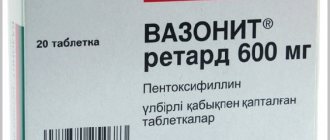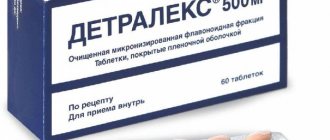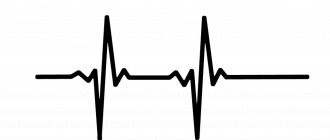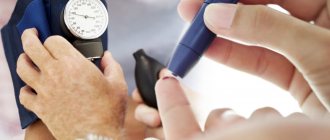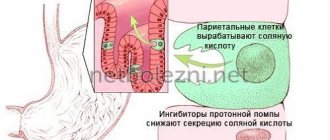Drugs that improve blood circulation are a group of drugs that improve the nutrition of the heart by increasing its blood supply due to the expansion of the coronary vessels.
Drugs that improve blood circulation are indicated for insufficiency of coronary (cardiac) circulation, which is manifested by coronary heart disease.
Coronary heart disease (CHD) is a pathological condition associated with oxygen starvation of the heart muscle (myocardium) due to insufficient blood supply to the vessels of the heart.
Depending on the cause and nature of the course, IHD is divided into acute and chronic.
The cause of acute ischemic heart disease is partial or complete blockage of the lumen of blood vessels by a thrombus. Acute coronary heart disease is manifested by unstable angina and myocardial infarction.
Chronic ischemic heart disease is manifested by angina pectoris. The causes of angina are usually narrowing of the lumen of the coronary (heart) vessels by atherosclerotic plaque (angina pectoris) or vasospasm (variant angina).
Basics of treatment with drugs that improve blood circulation
Drugs that improve blood circulation are used both to eliminate (relieve) an attack of angina, and systematically to prevent the occurrence of attacks.
To relieve angina attacks, nitroglycerin and isosorbide dinitrate are most often used under the tongue (sublingually).
To prevent angina attacks, isosorbide mononitrate, isosorbide dinitrate, pentaerythrityl tetranitrate, molsidomine, and nicorandil are used orally.
The role of nitrates in the treatment of coronary heart disease at the present stage
Nitrates are one of the “oldest” groups of drugs used in cardiology: nitroglycerin was used to relieve angina attacks back in 1879. For a long time, nitrates were used only in the form of dosage forms with a short duration of action. Since the mid-twentieth century, long-acting drugs have also become available. There have been lively debates about the effectiveness of the latter and the advisability of their use for a long time, but some problems associated with the administration of long-acting nitrates have not yet been resolved.
Classification of nitrates and their mechanism of action
Nitrates vary in their chemical structure. Currently, three drugs are used: nitroglycerin (or glyceryl trinitrate), isosorbide dinitrate and isosorbide-5-mononitrate. These drugs are usually called organic nitrates. Their mechanism of action is the same: as a result of complex biochemical reactions, all these drugs are converted into nitric oxide (NO), a substance that is the so-called endothelial relaxing factor. The differences between the three nitrates mentioned above lie only in the duration of their effect: nitroglycerin has the shortest duration of action (15-20 minutes), isosorbide dinitrate, prescribed in regular tablets, lasts 3-5 hours, isosorbide-5-mononitrate, prescribed in regular tablets , - 5-7 hours. Long-acting dosage forms of the same drugs have a longer-lasting effect.
Nitrates easily penetrate through any mucous membrane, as well as through the skin, so they are produced in numerous dosage forms: tablets under the tongue, tablets or plates for application to the gums, aerosols, tablets and capsules for oral administration, various forms for application to the skin, solutions for intravenous administration.
It is convenient to classify nitrates by duration of action. Conventionally, they are divided into drugs with a short duration of action (up to 1 hour), which include primarily nitroglycerin tablets for administration under the tongue and aerosols of nitroglycerin and isosorbide dinitrate, drugs with a moderately prolonged action (from 1 to 6 hours), which include regular tablets isosorbide dinitrate, isosorbide-5-mononitrate, nitroglycerin, drugs with significantly prolonged action (more than 6 hours), such as special tablets and capsules of isosorbide dinitrate and isosorbide-5-mononitrate (Olycard 40 retard), as well as transdermal dosage forms of nitroglycerin and isosorbide dinitrate .
Indications for the use of nitrates
Nitrates have a distinct antianginal, or, more precisely, anti-ischemic effect, that is, the ability to prevent the occurrence of myocardial ischemia or reduce its severity. Therefore, these drugs are used to treat all types of angina: stable angina, unstable angina, variant angina. Nitrates have no effect on the course of coronary heart disease, so prescribing them for preventive purposes is pointless. A number of studies (in particular, ISIS-4 - Fourth International Study of Infarct Survival [1]) have shown that nitrates do not have any effect on the prognosis of life in patients with a high risk of complications, for example, in patients who have suffered a myocardial infarction. To improve the life prognosis in such patients, other drugs are used, primarily β-blockers. There is still no data regarding whether nitrates affect the long-term prognosis of life in patients with stable angina pectoris.
Previously, nitrates were actively used to treat congestive heart failure, but now, after the widespread introduction of angiotensin-converting enzyme inhibitors, their role in the treatment of this disease has significantly decreased. Nitrates continue to be actively used in the acute phase of myocardial infarction, but their ability to influence the extent of the infarction has not been proven.
Nitrates compared with other antianginal drugs
Nitrates, along with β-blockers and calcium antagonists, are part of the main antianginal drugs. In terms of the severity of the antianginal effect, they are at least not inferior to calcium antagonists and β-blockers, and according to some data, even superior to them. Thus, in the course of the CIAP study (Cooperative Study of Antianginal Drugs), conducted in patients with coronary artery disease with stable angina pectoris of the 2nd-3rd functional class, the task was to select the most effective antianginal drug for each of the patients participating in the study. To evaluate the result, tests with dosed physical activity were used. It was shown that for 27% of patients the most effective antianginal drugs are nitrates, for 19% - calcium antagonists, for 11% of patients - β-blockers. In other cases, the effectiveness of different groups of drugs was approximately the same [2].
It is convenient to combine nitrates with β-blockers, as well as with the so-called pulse-reducing calcium antagonists - verapamil and diltiazem. However, the combination of nitrates with dihydropyridine calcium antagonists not only does not provide any benefits, but even increases the risk of side and undesirable effects.
How can a practitioner monitor the effectiveness of nitrate therapy?
The effect of nitrates is manifested by an improvement in exercise tolerance, accompanied by a decrease in signs of myocardial ischemia. Therefore, the best way to objectify the effect of nitrates (as well as other antianginal drugs) is to conduct tests with dosed physical activity (on a treadmill or bicycle ergometer) against the background of the action of the drugs and compare the results obtained with those indicators that occurred before the prescription of nitrates. However, practice shows that such tests are carried out quite rarely.
There is also an indirect sign that allows one to evaluate the effect of nitrates: it has been shown that effective doses of these drugs cause a decrease in systolic blood pressure by 15-20 mm Hg. Art. Therefore, the doctor can easily assess the effectiveness of their action by measuring systolic blood pressure before prescribing the nitrate and then during the period when the effect of the drug should be maximum (that is, 5-10 minutes after taking short-acting dosage forms or 1-2 hours after taking drugs long-acting forms).
Contraindications to the administration of nitrates
There are few contraindications to the use of nitrates. According to the official recommendations of the American Heart Association, hypertrophic obstructive cardiomyopathy is a relative contraindication to the prescription of nitrates (nitrates in this disease can increase the degree of obstruction of the left ventricular outflow tract and the severity of mitral regurgitation and thereby cause presyncope or syncope). Nitrates can have the same effect on patients with severe aortic stenosis [3].
Nitrates are used with caution in patients with low blood pressure (BP), however, there are no clear recommendations regarding the lower limit of blood pressure at which the use of nitrates is contraindicated. Taking nitrates is not recommended for increased intracranial pressure. Glaucoma, contrary to previously held opinion, is not a contraindication to the use of nitrates.
Problems arising during treatment with nitrates
Side effects of nitrates are few. First of all, these include headache, which occurs in more than half of patients when taking nitrates for the first time. If you continue to take nitrates, the intensity of the headache usually decreases significantly or disappears altogether. However, in some patients, even with regular intake of nitrates, the headache persists, and all attempts to “accustom” such patients to the action of nitrates end in failure. These patients, apparently, should not be prescribed long-acting nitrates at all, limiting themselves to taking short-acting dosage forms. It is most convenient to use nitrate aerosols for this purpose (for example, nitroglycerin aerosol - nitromint).
With regular use of nitrates, their effect can weaken significantly, and sometimes even disappear; in such cases, they talk about the development of addiction (or tolerance) to nitrates. The severity of addiction to nitrates varies from patient to patient, but on average the likelihood of developing tolerance is directly proportional to the length of time the drug remains in the body.
Accustoming to nitrates is a reversible phenomenon. After nitrates are removed from the body, sensitivity to them is soon restored. The principle of intermittent administration of nitrates is based on this pattern, which provides for the creation of a so-called “period free from the action of nitrates” during the day. It is believed that in order for addiction to nitrates not to develop, the duration of this period during the day should be 6-8 hours.
The disadvantage of intermittent administration of nitrates is the inability to maintain therapeutic effectiveness for 24 hours (although in most patients this is not necessary, see below). In addition, during the period free from the action of nitrates, the development of the so-called rebound syndrome is possible, which develops in response to the rapid disappearance of the drug from the body and is a special case of withdrawal syndrome. When using long-acting dosage forms of nitrates prescribed orally, rebound syndrome usually does not develop, since the concentration of the drug in the body in this case decreases quite smoothly.
How to prescribe nitrates in the clinic
In order to maximize the beneficial effects of nitrates and reduce the risk of side and undesirable effects, these drugs are prescribed differentially, taking into account the severity of coronary artery disease and the characteristics of its course in a particular patient [4]. “Routine” prescription of nitrates (1 tablet 3 times a day), often practiced to this day, does not allow their therapeutic properties to be fully realized and is fraught with the development of complications.
In order to identify the need to prescribe nitrates and develop a specific regimen for their administration, it is necessary to determine whether the patient has angina and identify its functional class. For this purpose, a survey according to the standard scheme is used [3]. To document myocardial ischemia, it is advisable to perform an exercise test.
If a patient, even with proven coronary artery disease (for example, having previously suffered a myocardial infarction), does not have angina pectoris and there are no signs of myocardial ischemia during dosed physical activity, then there is no need for regular use of nitrates. It is advisable for such patients to have short-acting nitrates with them (it is most convenient to use nitrates in aerosol form for this) in case of anginal pain.
In the presence of angina, whenever possible, nitrates are prescribed intermittently to minimize the risk of addiction. For mild angina (functional class 1 or 2), when attacks occur predictably, only during physical activity, nitrates are prescribed in the form of dosage forms of short or moderately prolonged action and only in cases where a situation arises that can provoke an attack of angina. . Forms of drugs with a rapid onset of action are suitable for this - aerosols of nitroglycerin (for example, the previously mentioned drug nitromint) or isosorbide dinitrate, dosage forms of nitroglycerin for application to the gums, regular tablets of isosorbide dinitrate (nitrosorbide). The advantage of nitrate aerosols is also their ease of use, as well as the good preservation of the drug that these dosage forms provide.
For more severe angina, when attacks occur more often, with less physical activity, and also at rest, nitrates are prescribed in the form of long-acting dosage forms, and, if possible, they also try to create a period during the day free from the effects of nitrates. For angina pectoris of the 3rd functional class, nitrates are used in such a way as to ensure a constant effect throughout the day. To do this, prescribe either regular tablets of isosorbide dinitrate and isosorbide-5-mononitrate 3-4 times a day, or (which is more convenient) tablets of isosorbide dinitrate and isosorbide-5-mononitrate (Olycard 40 retard) of significantly prolonged action once a day in the morning.
For angina pectoris of the 4th functional class, nitrates must be prescribed in such a way as to ensure a constant effect of the drug throughout the day. For this purpose, dosage forms of isosorbide dinitrate or isosorbide-5-mononitrate (Olycard 40 retard) of significantly prolonged action are prescribed 2 or even 3 times a day. It should be remembered that with this method of prescribing nitrates, the risk of developing addiction to them is especially high.
Conclusion
Thus, the role of nitrates in the treatment of patients with coronary artery disease is still high, but only a differentiated approach to their administration, based on the ability to correctly diagnose and knowledge of clinical pharmacology, will help achieve the desired result.
S. Yu. Martsevich, Doctor of Medical Sciences, Professor of the State Research Center for Preventive Medicine of the Ministry of Health of the Russian Federation, Moscow
Literature
- ISIS-4 (Fourth International Study of Infarct Survival) Collaborative Group. ISIS-4: A randomized factorial trial assessing early oral captopril, oral mononitrate, and intravenous magnesium sulphate in 58,050 patients with suspected acute myocardial infarction // Lancet. 1995; 345:669-685.
- Metelitsa VI, Kokurina EV, Martsevich SY Individual choice and long-term administration of the antianginal drugs for secondary prevention of ischemic heart disease: problems, new approaches // Sov. Med. Rev. A. Cardiology. 1991; 3: 111-134.
- ACC/AHA/ACP-ACIM Guidelines for the management of patients with chronic stable angina. A report of the American College of Cardiology/ American Heart Association Task Force on Practice Guidelines // J. Amer. Coll. Cardiol. 1999; 33: 2092-2198.
- Martsevich S. Yu. Debuts of coronary heart disease: diagnostic and treatment strategy // Cardiovascular therapy and prevention. 2002; 1: 76-83.
Some statistics
According to a Comcon study conducted in October 2001, more than 60% of Russian clinic physicians prescribe menthol-containing drugs to relieve an attack of angina. Moreover, 42% of doctors consider such therapy highly effective. At the same time, leading foreign and domestic cardiologists consider such therapy not only ineffective, but also dangerous. Since the appointment of such therapy ultimately leads to a delay in the elimination of acute ischemia and may be the reason for its transition to an irreversible form - myocardial infarction. At the present stage, the drug of choice for the treatment of an attack of angina is nitroglycerin in aerosol form.
Olicard 40 retard in the treatment of angina pectoris
Olicard 40 retard is the only domestic mononitrate.
Olycard 40 retard is presented in a unique galenic form - capsules containing microspheres with gradual release of the active substance, which ensures a long-term therapeutic effect and the absence of tolerance.

